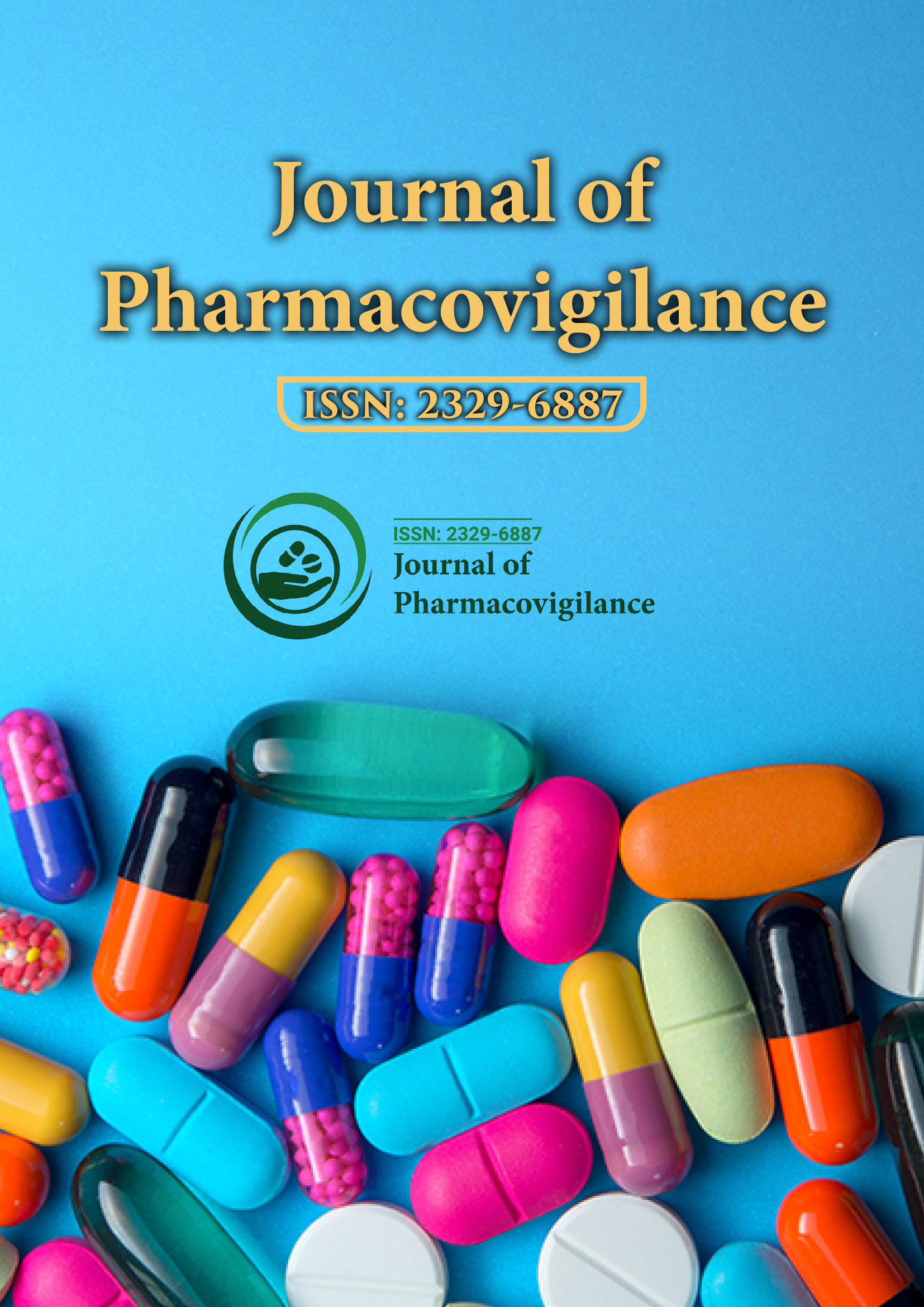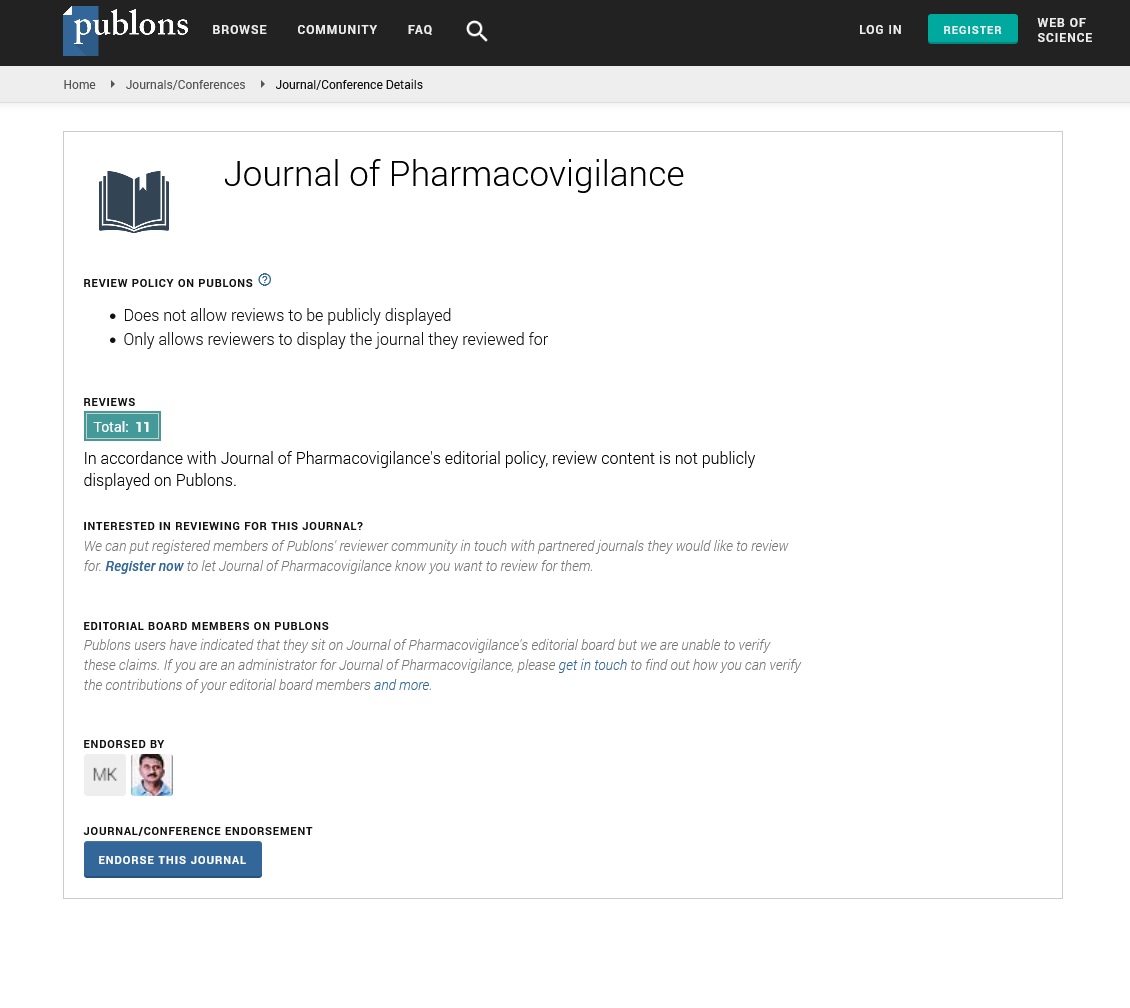Indexed In
- Open J Gate
- JournalTOCs
- The Global Impact Factor (GIF)
- RefSeek
- Hamdard University
- EBSCO A-Z
- OCLC- WorldCat
- Publons
- Euro Pub
- Google Scholar
Useful Links
Share This Page
Journal Flyer

Open Access Journals
- Agri and Aquaculture
- Biochemistry
- Bioinformatics & Systems Biology
- Business & Management
- Chemistry
- Clinical Sciences
- Engineering
- Food & Nutrition
- General Science
- Genetics & Molecular Biology
- Immunology & Microbiology
- Medical Sciences
- Neuroscience & Psychology
- Nursing & Health Care
- Pharmaceutical Sciences
Opinion - (2021) Volume 9, Issue 11
What are Herbal Medicineâs? Its History, Preparations and Current Beliefs in Todayâs Times
Vishakha Nigam*Received: 03-Nov-2021 Published: 24-Nov-2021
Herbal Medicine (likewise herbalism) is the investigation of pharmacognosy and the utilization of restorative plants, which are a premise of customary medicine. There is restricted logical proof for the wellbeing and adequacy of plants utilized in 21st century herbalism, which by and large doesn't give principles to virtue or dosage. The extent of natural medication usually incorporates parasitic and honey bee items, just as minerals, shells and certain creature parts. Home grown medication is additionally called phytomedicine or phytotherapy. Paraherbalism depicts elective and pseudoscientific acts of utilizing raw plant or creature extricates as problematic medications or wellbeing advancing agents. Paraherbalism depends on the conviction that safeguarding different substances from a given source with less handling is more secure or more successful than fabricated items, an idea for which there is no evidence [1].
History
Archeological proof demonstrates that the utilization of restorative plants traces all the way back to the Paleolithic age, around 60,000 years prior. Composed proof of natural cures goes back north of 5,000 years to the Sumerians, who accumulated arrangements of plants. Some antiquated societies expounded on plants and their clinical uses in books called herbals. In antiquated Egypt, spices are referenced in Egyptian clinical papyri, portrayed in burial chamber representations, or on uncommon events found in clinical containers containing follow measures of herbs.[6] In old Egypt, the Ebers papyrus dates from around 1550 BC, and covers in excess of 700 mixtures, principally of plant origin. The most punctual known Greek herbals came from Theophrastus of Eresos who, in the fourth century BC, wrote in Greek Historia Plantarum, from Diocles of Carystus who composed during the third century BC, and from Krateuas who wrote in the first century BC. A couple of pieces of these works have endure unblemished, however from what remains, researchers noted cross-over with the Egyptian herbals.[8] Seeds probably utilized for herbalism were found in archeological locales of Bronze Age China dating from the Shang dynasty (c. 16001046 BC). More than 100 of the 224 mixtures referenced in the Huangdi Neijing, an early Chinese clinical text, are herbs. Herbs were likewise generally utilized in the customary medication of old India, where the foremost treatment for sicknesses was diet. De Materia Medica, initially written in Greek by Pedanius Dioscorides (c. 4090 AD) of Anazarbus, Cilicia, a doctor and botanist, is one illustration of home grown composing utilized over hundreds of years until the 1600s [2].
Modern Herbal Medicine
The World Health Organization (WHO) assesses that 80% of the number of inhabitants in some Asian and African nations as of now utilize natural medication for some part of essential wellbeing care. Some doctor prescribed medications have a premise as home grown cures, including artemisinin, headache medicine, digitalis, and quinine.
Regulatory Review
In 2015, the Australian Government's Department of Health distributed the consequences of an audit of elective treatments that tried to decide whether any were appropriate for being covered by health care coverage; herbalism was one of 17 themes assessed for which no obvious proof of adequacy was found. Establishing rules to survey wellbeing and viability of natural items, the European Medicines Agency gave models in 2017 to assessing and reviewing the nature of clinical examination in getting ready monographs about home grown items.
Herbal Preparations
Home grown teas, or tisanes, are the resultant fluid of extricating spices into water, however they are made in one or two ways. Implantations are heated water concentrates of spices, like chamomile or mint, through soaking. Decoctions are the drawn out bubbled removes, ordinarily of harder substances like roots or bark. Maceration is the chilly implantation of plants with high adhesive substance, like sage or thyme. To make macerates, plants are slashed and added to cold water. They are then passed on to represent 7 to 12 hours (contingent upon spice utilized). For most macerates, 10 hours is used. Colours are alcoholic concentrates of spices, which are for the most part more grounded than natural teas. Tinctures are normally acquired by joining 100% unadulterated ethanol (or a combination of 100% ethanol with water) with the spice. A finished color has an ethanol level of at minimum 25% (now and again up to 90%). Non-alcoholic colors can be made with glycerin yet it is accepted to be less consumed by the body than liquor based colors and has a more limited rack life. Herbal wine and elixirs are alcoholic concentrate of spices, ordinarily with an ethanol level of 1238%. Extracts incorporate fluid concentrates, dry concentrates, and nebulisates. Fluid concentrates are fluids with a lower ethanol rate than colors. They are typically made by vacuum refining colors. Dry concentrates are concentrates of plant material that are dissipated into a dry mass. They would then be able to be additionally refined to a container or tablet [3].
Beliefs
Cultivators will quite often utilize extricates from parts of plants, like the roots or leaves, accepting that plants are dependent upon ecological tensions and consequently foster protection from dangers like radiation, responsive oxygen species and microbial assault to make due, giving guarded phytochemicals of utilization in herbalism [4].
REFERENCES
- Willcox ML, Bodeker G. Traditional herbal medicines for malaria. BMJ. 2004; 329:1156–9.
- Zaslawski C. The ethics of complementary and alternative medicine research: a case study of Traditional Chinese Medicine at the University of Technology, Sydney. Monash Bioeth Rev. 2005; 24:52–60.
- Emanuel EJ, Wendler D, Killen J, Grady C. What makes clinical research in developing countries ethical? The benchmarks of ethical research. J Infect Dis. 2004; 189:930–7.
- Miller FG, Emanuel EJ, Rosenstein DL, Straus SE. Ethical issues concerning research in complementary and alternative medicine. JAMA. 2004; 291:599–604.
Citation: Nigam V (2021) What are Herbal Medicineâ??s? Its History, Preparations and Current Beliefs in Todayâ??s Times J Pharamacovigil 9:347. doi-10.35248/2329-6887.21.9.347.
Copyright: © 2021 Nigam V. This is an open-access article distributed under the terms of the Creative Commons Attribution License, which permits unrestricted use, distribution, and reproduction in any medium, provided the original author and source are credited.

